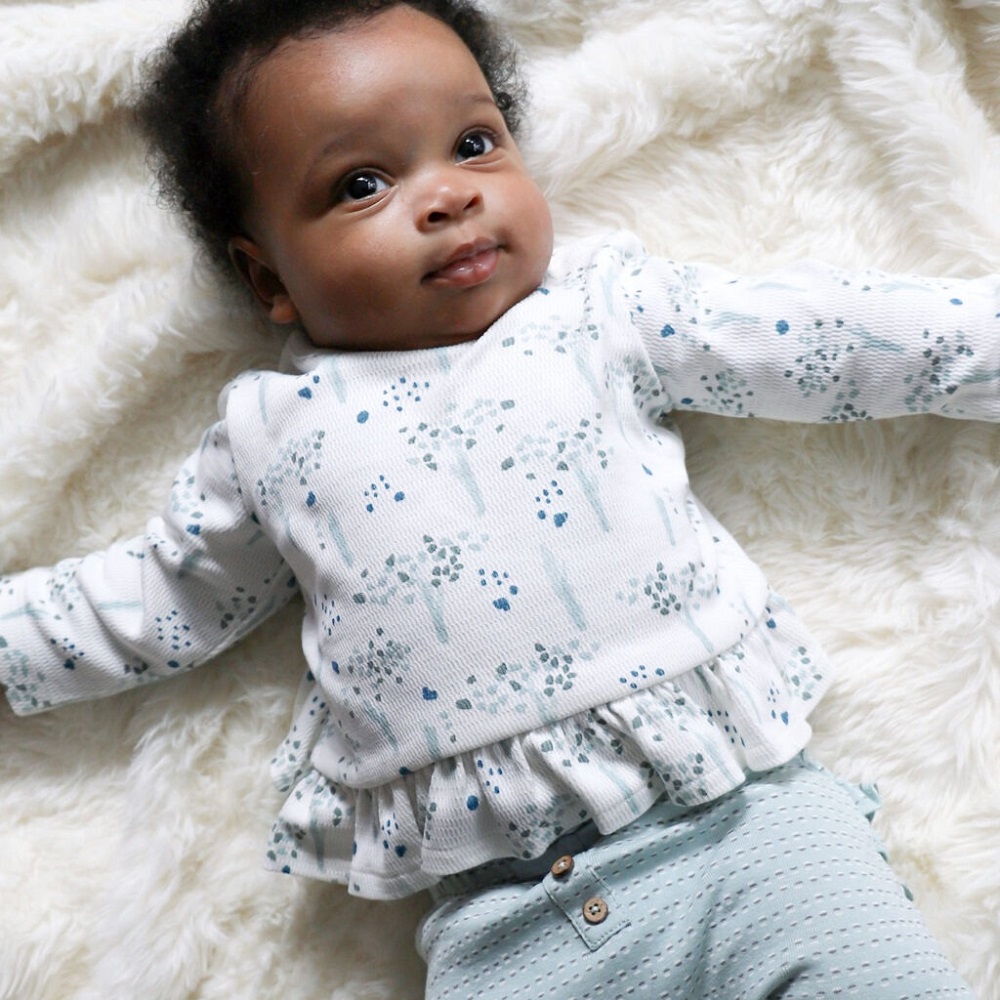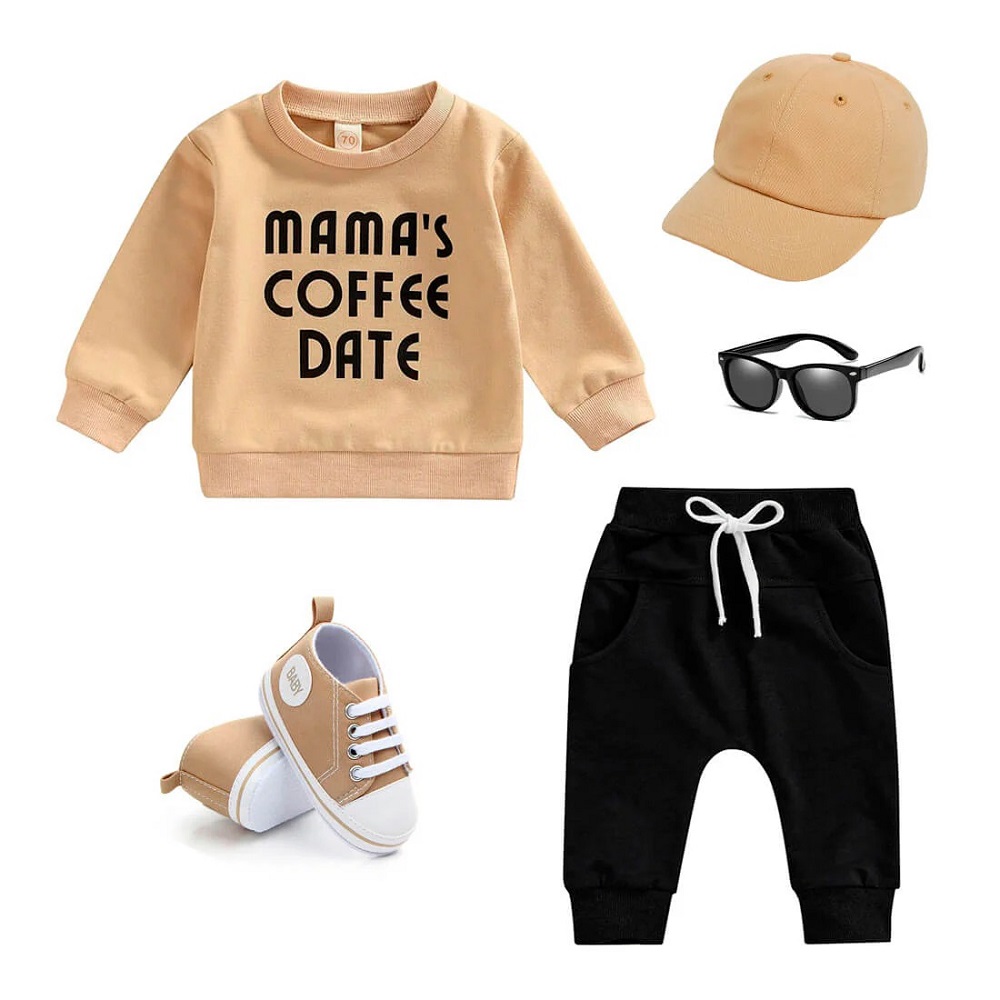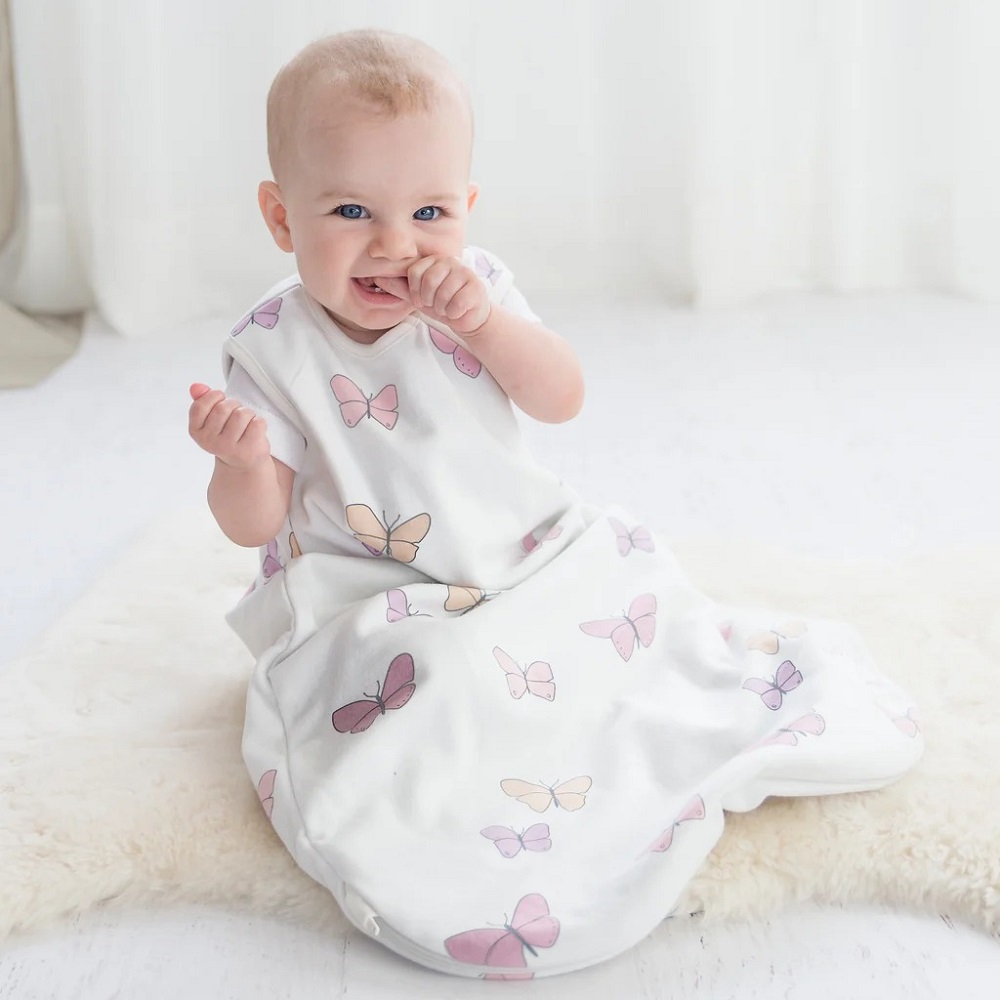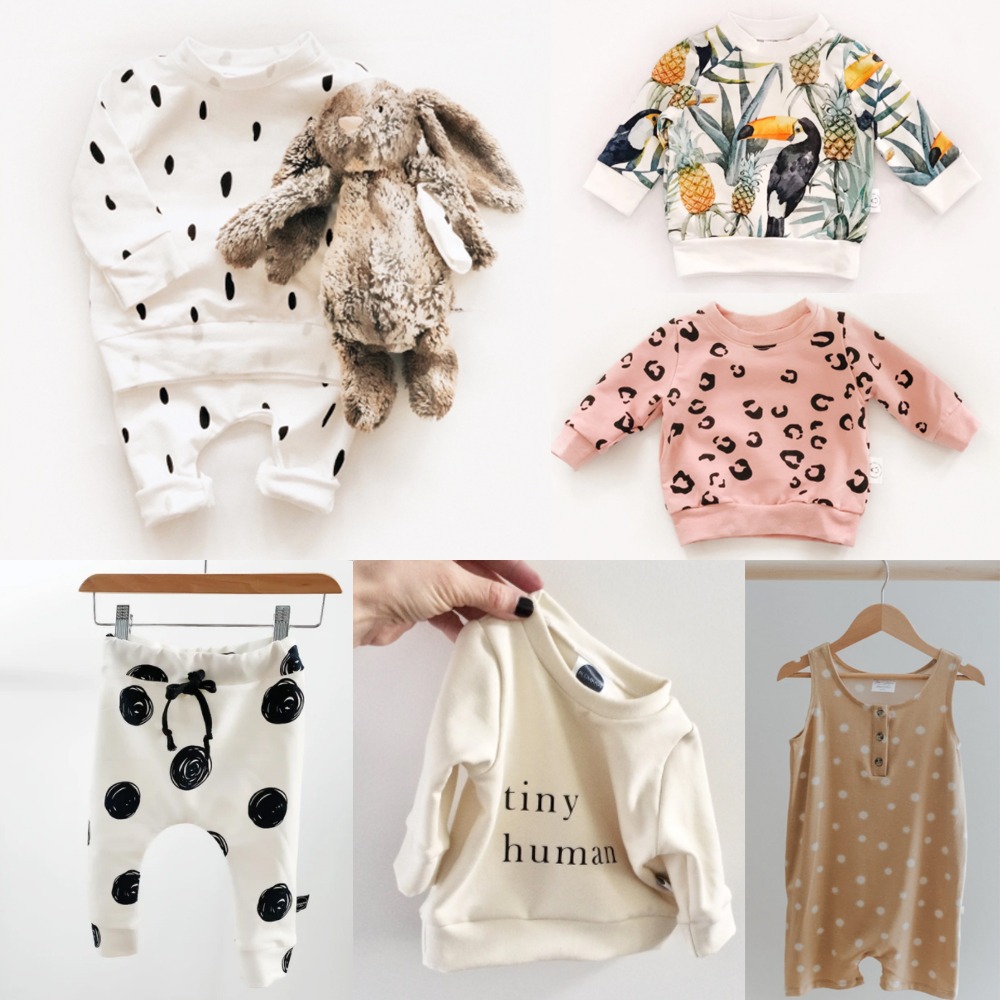Understanding Size 90 in Baby Clothes
When it comes to baby clothing, ‘size 90’ often raises questions among parents. Let’s break it down. Size 90 generally fits babies aged 18-24 months, with consideration for variation in growth patterns. It is essential to understand this size reference to make informed decisions when buying apparel for your little one.
In many regions, ‘size 90’ corresponds to the baby’s height. It means that the clothes are ideal for babies who are approximately 90 centimeters tall. However, ‘size 90 baby clothes’ is not a universal term. Brands may differ in their sizing, so it’s crucial to check the specific brand’s sizing chart.
Knowing the meaning of size 90 helps you anticipate your baby’s needs. It allows you to shop for clothes that they can grow into, not out of, within a couple of months. Selecting the right size also ensures that your baby stays comfortable and can move freely, promoting healthy development.
Always remember, when you see ‘size 90’ on baby clothes, think of it as a height indicator for the age group of roughly 1.5 to 2 years. Consider your baby’s growth trajectory to determine if this size is currently suitable or if it is better as the next size up in their wardrobe.

How to Measure Your Baby for Size 90 Clothes
Measuring your baby accurately is crucial when shopping for size 90 baby clothes. Here’s a simple guide:
- Height: Place your baby against a wall. Mark the spot on the wall that aligns with the top of their head. Measure from the floor to the mark to find their height.
- Chest: Use a soft tape measure. Wrap it around the fullest part of your baby’s chest. Ensure the tape is level and snug, but not tight.
- Waist: Measure around the natural waistline. This is usually just above the belly button. The tape should be snug but not compressing the skin.
- Hips: Find the widest part of your baby’s hips. Circle the tape measure around this area.
- Inseam: Measure from the crotch to the bottom of their ankle. It’s easier if your baby is lying down.
Write the numbers down and compare them to the brand’s size chart for size 90 baby clothes. Remember, no two brands are the same. So, always check before you buy. It’s best to measure your baby every couple of months. Babies grow fast and their size can change quickly. With the right measurements, you’ll find clothes that fit well and allow room for growth.
When to Choose Size 90 for Your Baby
Choosing the right time to buy size 90 baby clothes can be a bit tricky. You should consider the following points to make a timely decision:
- Age and Growth Spurts: Typically, size 90 is suitable for babies aged 18-24 months. Look for signs of growth spurts that indicate it’s time to size up.
- Current Fit: If your baby’s current clothes are snug or they seem uncomfortable, it’s time to consider size 90.
- Anticipated Season: Think ahead to the upcoming season. Will your baby be in the size 90 range during winter or summer? Choose size accordingly.
- Special Occasions: Upcoming events might require new outfits. Ensure you have size 90 clothes ready for these occasions.
- Sales and Deals: Take advantage of sales to get size 90 clothes before your baby needs them. This way, you’re prepared and save money.
By keeping these factors in mind, you can choose size 90 baby clothes at the best time for comfort, practicality, and value.
Top Factors to Consider When Buying Size 90 Baby Clothes
When purchasing size 90 baby clothes, consider these key factors to ensure you make the best choices:
- Material: Pick soft, hypoallergenic fabrics for comfort, especially if your baby has sensitive skin.
- Fit: While size 90 typically fits 18-24 month-olds, assess the fit based on your baby’s exact measurements.
- Adjustability: Look for clothes with adjustable waistbands or straps to accommodate growth spurts.
- Ease of dressing: Choose outfits with snaps, zippers, or wide neck openings for hassle-free dressing.
- Ease of cleaning: Opt for machine-washable and dryer-friendly materials to simplify laundry days.
- Brand sizing: Confirm the brand’s size chart as size 90 may vary across different labels.
- Durability: Select clothes that withstand repeated washing and active baby play.
- Safety: Avoid clothes with small buttons, loose threads, or decorations that could pose a choking hazard.
- Cost-effective: Consider buying in bulk or on sale to save on costs without compromising quality.
Remember these points, and you’ll find size 90 baby clothes that are practical, durable, and comfortable for your little one.

Seasonal Considerations for Size 90 Baby Outfits
When dressing your baby in size 90 clothes, keep the seasons in mind. For summer, look for lightweight, breathable fabrics such as cotton. Choose short sleeves, shorts, or dresses to keep your little one cool. Always include a hat for sun protection.
In winter, warm and insulating materials are key. Think of layering with sweaters, long pants, and cozy sleepwear. Don’t forget hats, mittens, and booties to protect against the cold. For transition seasons like spring and fall, layering is also important. Use cardigans, long-sleeve tops, and snug leggings that can be added or removed as the day warms up or cools down.
Rain gear is a must-have for damp weather. Waterproof jackets or ponchos and rain boots will keep your baby dry and comfortable. In any season, always choose size 90 outfits that offer ease of movement. This ensures your baby can play and explore their world without restriction.
Remember to adjust your baby’s wardrobe as the seasons change. Doing so keeps your baby comfortable, safe, and ready for any weather. Size 90 baby clothes come in a variety of seasonal styles, making it easy to mix and match for any temperature. With thoughtful planning, your baby’s size 90 clothes will be just right for every season.
Mix and Matching Size 90 Baby Wardrobe Essentials
Building a mix-and-match wardrobe for your baby can be both fun and practical. With size 90 baby clothes, it’s about finding versatile pieces that work together seamlessly. Here’s how to create a capsule wardrobe for your baby:
- Start with Basics: Include essentials like bodysuits, leggings, and tees. Choose neutral colors for easy pairing.
- Layering Pieces: Add cardigans, jackets, and hoodies that complement the basics. They can be worn across seasons.
- Statement Items: Pick a few eye-catching pieces, such as a patterned dress or colorful overalls.
- Accessories: Hats, socks, and bibs in various colors make it easy to switch up looks.
- Footwear: Select comfortable, durable shoes that match with multiple outfits.
With these essentials, you’ll be able to create numerous outfits from a few key pieces, making dressing your baby both efficient and stylish. Don’t forget to check for size 90 when shopping to ensure a good fit!
Caring for Size 90 Baby Clothes: Washing and Maintenance Tips
Caring for size 90 baby clothes is critical for their longevity and safety. Here are essential tips to maintain the quality and comfort of your baby’s wardrobe.
- Read Care Labels Carefully: Always check the labels before washing any size 90 baby clothes. They provide vital information on the temperature, washing method, and whether it is safe to use a dryer.
- Use Baby-Safe Laundry Detergents: Opt for detergents that are gentle and free of harsh chemicals. These are safer for your baby’s skin and the fabric of the clothes.
- Wash Bright Colors Separately: To prevent colors from bleeding, wash dark and bright clothes separately from light ones.
- Close All Fasteners: Before washing, close snaps, zippers, and Velcro. This prevents snagging and damage to other clothes.
- Turn Clothes Inside Out: Protect prints and colors by turning size 90 baby clothes inside out when washing.
- Choose the Right Wash Cycle: Use a gentle cycle for baby clothes to avoid wear and tear on the fabric.
- Avoid Fabric Softeners: They can break down the fibers and reduce the clothing’s absorbency. They might also irritate your baby’s skin.
- Dry Clothes Properly: If possible, air dry the clothes. If using a dryer, use a low heat setting to prevent shrinkage.
- Iron With Care: Use a low heat setting when ironing. Avoid ironing decorations or prints directly.
- Store Clothes Neatly: Fold size 90 baby clothes and store them in a dry, cool place. For clothes not in use, consider airtight containers to protect from dust.
By following these simple washing and maintenance tips, your size 90 baby clothes will remain in excellent condition, ensuring comfort and style for your little one as they grow.

Where to Find the Best Deals on Size 90 Baby Clothes
Finding great deals on size 90 baby clothes can save you money while keeping up with your growing baby’s needs. Here’s where to look:
- Online Retailers: Check out popular online stores for discounts and clearance sales. They often offer large selections of size 90 clothes.
- Local Baby Stores: Visit nearby baby clothing shops. They may have in-store promotions or clearance racks with reduced prices.
- Second-Hand Shops: Gently used clothes are not only affordable but also eco-friendly. Look for second-hand shops that specialize in baby attire.
- End-of-Season Sales: Purchase size 90 clothes at the end of a season. This is when retailers clear out current stock for the next season’s styles.
- Sign Up for Newsletters: Subscribe to newsletters from your favorite baby clothing brands. They send out exclusive deals and early sale notices.
- Buy in Bulk: Some stores offer discounts when you buy multiple items. This can include deals on bodysuits or sets of size 90 clothes.
- Use Coupons: Look for coupons in magazines, store flyers, or online coupon sites. Combine coupons with sales for extra savings.
By using these strategies, you can find the best deals on size 90 baby clothes. This way, you ensure your baby is dressed comfortably without overspending.
